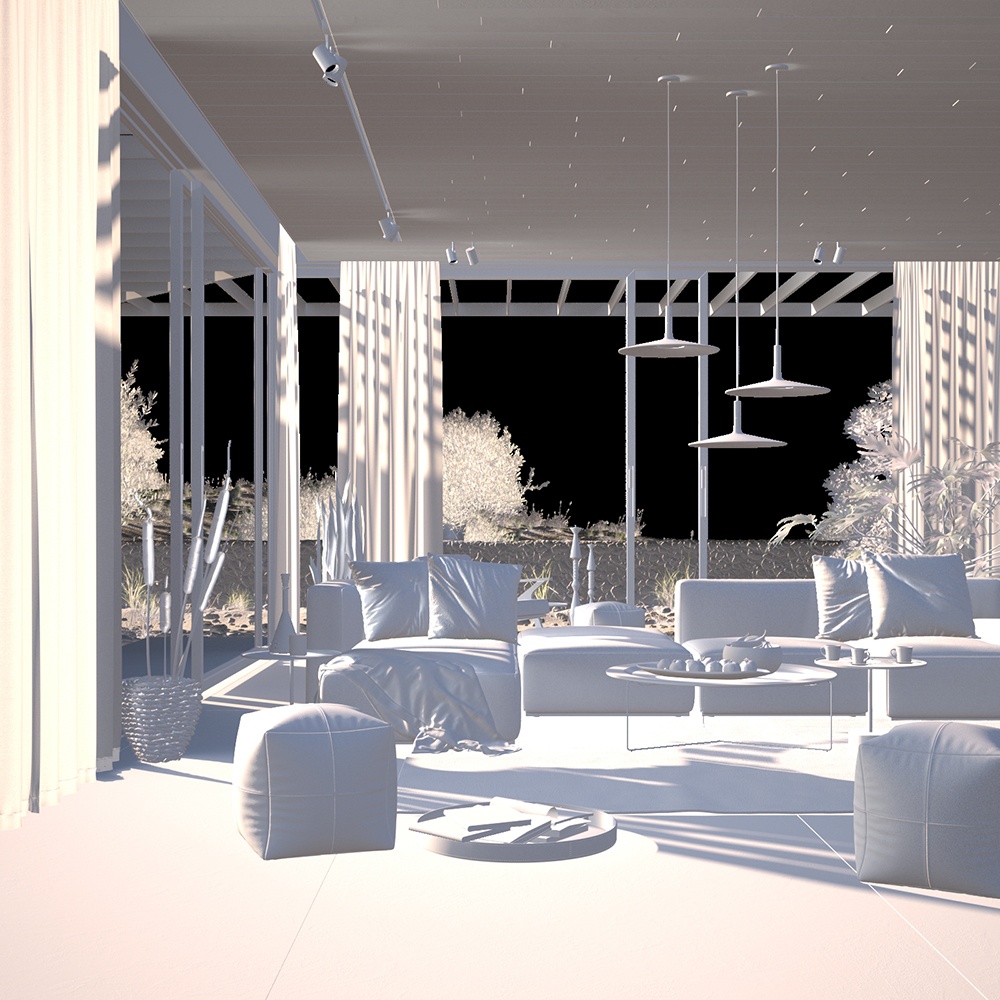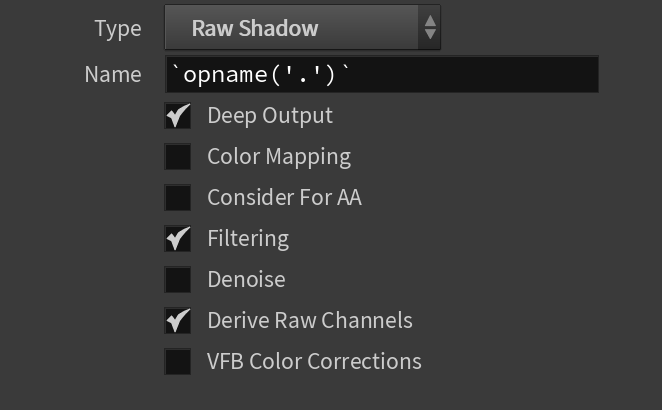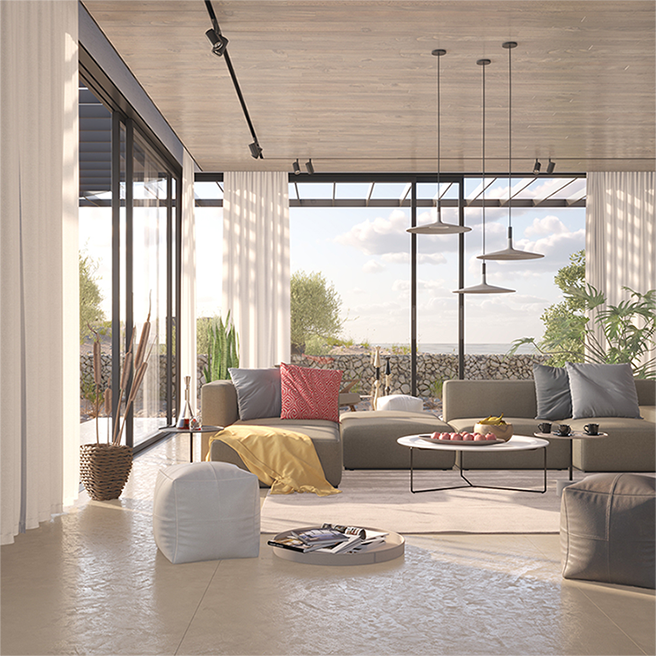This page gives some basic details about the Raw Shadow render element and explains how it is used.
Overview
The Raw Shadow Render Element stores information about cast shadows calculated from the lighting in the scene. It is a "reverse" image in the sense that white areas indicate shadows while black areas indicate no shadow.
Attributes
The parameters for this render element appear in the V-Ray RenderChannelColor render channels node.
Deep Output – Specifies whether to include this render element in deep images.
Color Mapping – When enabled, the Color Mapping options in the render settings are applied to the current render channel.
Consider For AA – When enabled, anti-aliasing is used where possible.
Filtering – Applies the image filter to this channel. Image filter settings are in the Image Sampler tab of the Sampler tab of the V-Ray Renderer node.
Denoise – Enables the render element's denoising, provided the V-Ray Denoiser render element is present.
Derive Raw Channels – Generates data in the raw channels by combining the respective color and the filter color channels.
VFB Color Corrections – Applies the post render color adjustments made from the VFB.
Common Uses
The Raw Shadows Render Element is useful for changing the appearance of shadowed areas after rendering in a compositing or image editing application. In the example, the Raw Shadows were added (plus) to the VRayRawLighting Render Element. See how the render looks before and after compositing.
Underlying Compositing Equation
Raw Shadow x Diffuse = Shadow
Notes
Shadows can be both added and subtracted at a composite level without rerendering using the Shadow Render Elements.
Shadows can be color corrected using the Shadow Render Elements.
- This render element is not supported with V-Ray GPU rendering.




